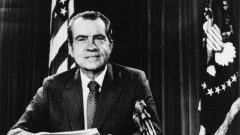Statism II
In my previous post, Statism I, I defined statism as an excessive and harmful embrace of the power of the state. Today, as a means of showing how prevalent statism is, I want to show how statism has over time infected the standard models of economics – a discipline that is regarded as one of the most pro-market in the academy.
My argument as to economics is simple. One of the basic questions in economics is whether matters should be addressed by the market or the government. In comparing these two institutions, one should obviously do so in a fair way and then make a determination which institution would operate better. But that is not how neo-classical economics has treated the issue. Instead, when it has encountered an aspect of human behavior that can affect appropriate decisionmaking, it has consistently applied it in a biased manner that advantages government over markets.
Let’s start with a world of two perfect institutions — a democratic government that pursues the public interest with knowledge and good intentions and a market characterized by perfect competition. Both institutions do well, but of course no one regards this as a description of the real world.
One way of introducing some realism is to recognize that human actors are not entirely public interested, but are also self interested. Initially, neo-classical economics made the assumption that market actors were self interested, but seemed to assume that government actors were public interested. This was obviously biased in favor of government. It took Buchanan and Tullock and public choice more generally to address this issue, but it took them decades to overcome the fierce resistance. Eventually, more people came to realize that government actors were often acting to promote their own interests.
Once Buchanan had won the Nobel Prize, one might have assumed that the bias would have been eliminated, but like many other biases it was simply applied in other contexts. Some years ago, neo-classical economics recognized the problem of imperfect information. People like Joseph Stiglitz and George Akerlof introduced imperfect information into models of markets and argued for government regulation to address the market failures. But neither they nor most of the profession was disposed to apply the insight to governments. Thus, once again, an insight about human behavior that should have been applied in an even handed manner was instead used to criticize markets and support government. (I should note that I once confronted Stiglitz about this issue but he was unable to appreciate the point.)
Unsurprisingly, the statist bias continues to afflict economics. The most recent example is behavioral economics. Economists in recent decades have started to apply the insights of Kahneman, Tversky, and others, who argue that economic actors often do not behave rationally – especially in the way that rational choice theory assumes. And such economists have argued that the resulting market failures often just government action. But predictably these behavioral economists typically did not apply their insights to government. They rarely acknowledge that legislators are unlikely to act rationally and that even so called expert administrative agencies are unlikely to act rationally because of many of the same cognitive biases that behavioral economics emphasizes. The bias of statism is at work once again.

